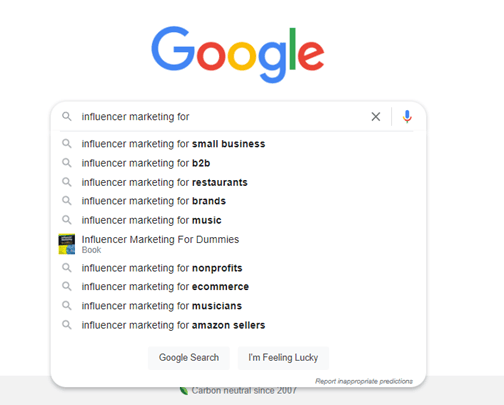

When you target to write irresistible it must be written for your audience, so that you audience finds relevant and valuable. The tone should be conversational and readable, experts suggest a readability of 4th to sixth grader. AT the sametime you should be aware of the keywords you want to use, so that your effort does not flow down the radar and does not get picked up by the audience.
Long tail key words fit greatly into such type of copy. Long tail as a term was used by Chris Anderson in his book the long tail, to suggest that there is residual demand for long tail items.
Long-tail keywords are keywords that have at least three phrases long and highly specific because they are targeted at the specific area of. For example, if your business sell sneakers for kids and you want to target your keywords on them, the first one is “kids sneakers.” However there are other related phrases you could target efficiently here. Keywords with a long tail are keyphrases which are more specific and typically longer than keywords that are more frequently used. The longer tail keywords might be less popular in search quantity, but you can be sure that the search intention will be more clear and the audience are typically more ahead in the AIDA journey. That is why long tail keywords typically yield higher conversion rates because they are more specific. Ahref suggests that long tail is not defined by the length of key words but by the amount of search results they get.
Ahrefs conducted a study over 1.9 billion keywords and discovered the 92% have 10 searches per month or less. Based on their analysis of their data, 60% of searches are directed to keywords that have 1 or more search volume, they are short-tail keywords which represent just 0.16 percent of the total keywords. The remainder of the keywords are long-tail keywords which account for 99.84 percent of queries having 1000 or less monthly searches.This is good news since longer-tail keywords are much easier to be ranked for, and generally receive more clicks on search engine at greater rate than smaller general terms.
Lower competition: Long-tail keywords are a lot more attainable to rank than short-tail keywords due to the low competition. They also comprise 70percent of internet searches, so if not paying attention to them in your strategies and you’re not taking advantage of huge opportunities to generate high-quality traffic. Long-tail keywords are beneficial for companies who wish to have their content to rank on organic Google search results, but they could be even more valuable to advertisers who run paid searsearch marketing campaigns.It’s because when you bid on long-tail keyword phrases, the cost per click will always be lower because there’s less competition.
A higher conversion rate: Long-tail keywords are more likely to convert at higher rates due to the fact that people who search for them have a better understanding of what they’re looking for. IN the customer journey term, they are typically more advanced in the journey and deeper down the buying funnel. If you are using the AIDA (Attention, desire, intent, action) framework for your journey mapping, typically long tail key words attract visitors with solid intent and ready for action. For instance, if someone searches on the internet for “13 year girls sneakers online,” the person is more likely to buy it immediately in comparison to someone who is searching specifically for “kids sneakers.” Wordstream suggests that utilizing long-tail keywords is just an issue of creating better communication channels between your company and people who are online, shopping for the products you offer.
It increases the likelihood of your content being read and actioned: If someone is searching for a long-tail term in modern times, the results of Google searches are much more personalised based on their area of residence, age, sexual orientation or other interests. So, two users who type the same search phrase could get different results. Long tail keywords are a great way to improve the performance of your website for various categories of users because they are more specific. For example
It helps you optimize your blog’s strategy and readability: When readers land on your blog or your content with more specific search intent and key words, they are expected to better relate to your content. If combined with google analytics, they will give you insight on what your target market is looking for, and enable you to develop valuable content which can solve certain of their issues by using that key phrase.
It lets you customize your content: You should focus on unique, urgent, useful as well as ultra specific content. When you are going beyond the surface of macro-niche key words and focusing on your specific micro-niche, you can be more relevant to them by identifying and creating content for long tail ultra specific phrases. Let’s get more information on long-tail keywords and how they influence the content you create. Long-tail keywords consist of up to five or six words (sometimes even more) and typically include descriptive words such as gender nationality, gender, or geographic locations. It is possible to use them for your benefit by making different types of content that be used to support the different categories and services your business offers. This lets you focus the content strategy and benefit from contextual marketing.
It can help you rank for keywords with short tails too: Most of the time the long-tail keywords already contain the keywords that you wish to be ranked for. This allows you to reach both your objectives increasing your rank for the main keywords, in addition to the ones you have specifically targeted to. More site rank means more organic traffic which is a good thing.
You can achieve better success while focused on your mission: Again we go back to the topic that if you write keeping your audience in mind and not for search engines, search engines will also like you. Keywords with long tails are more conversational which is a key element to the SEO strategy. They’re the basis of Google’s most recent search engine algorithm since it attempts to understand Natural Language Processing (NLP) and the motive of the search. Voice assistants, that can read out responses from highlighted snippets of text prioritize results with long-tail keywords within them.
Keyword research is a complex topic. You can get started with our SEO tools such as competition analysis, key word suggestion. Other sources could be free keyword suggestion platforms such as wordstream, keyword.io and Ubersuggest.
Google search suggestions: Look for the auto suggest suggestions. However they may still be highly popular terms, while specific they may have higher keyword difficulty.

Competition analysis: Do a competition analysis to find out the log tail phrases your competition is ranking for. You can get started with free tools at openconvertstack.
Browse Stack, Reddit, Quora and niche specific forums: These are rich sources of content with actual search phrases look for actual search terms and phrases that teams are using to ask questions and clarifications.
The trick is finding an ongoing, reliable source of long-tail keywords suitable for you and your specific niche. Incredibly, the majority of tools for keyword suggestions ignore this huge area, focusing on the head, overlooking the other parts of the beast.
Input your search keywords and press Enter.